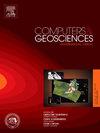Intelligent veins recognition method for slope rock mass geological images in complex background noise
IF 4.4
2区 地球科学
Q1 COMPUTER SCIENCE, INTERDISCIPLINARY APPLICATIONS
引用次数: 0
Abstract
The veins formed by magma intrusion often exist in the rock mass of slopes in the form of weak structural planes, thereby triggering landslide engineering disasters. Therefore, accurately identifying veins information from complex slope geological images is crucial. In light of this, this paper tackles the challenges encountered by traditional edge detection and deep learning algorithms in effectively detecting veins amidst complex background noise. These challenges include poor detection performance, low-quality manually annotated data, and the significant workload associated with manual annotation. To address these issues, we propose a vein intelligent recognition algorithm that combines OpenCV, AnyLabeling, and Mask R-CNN. By employing OpenCV, this study utilizes denoising and cropping techniques on the original images characterized by complex background noise. By preprocessing the raw dataset, it removes image noise and optimizes feature details within the images, thereby enhancing the quality of the dataset; Utilizing AnyLabeling for objective and automated annotation of veins information, this process eliminates the subjectivity associated with manual annotations, resulting in the creation of a high-quality library of veins image recognition samples; Building upon this foundation, we develop a Mask R-CNN model for veins contour segmentation. This model accurately and efficiently identifies veins information in complex geological images with background noise. Its successful application has been rigorously validated on a specific open-pit mine slope. The results indicate that this method successfully addresses the challenge of accurately identifying veins contours under complex background noise; The preprocessing technique, which combines OpenCV and AnyLabeling, demonstrates a significant enhancement in both the accuracy and efficiency of dataset annotation. This improvement contributes to heightened precision in the recognition results. Effectively discerned intricate veins details within the specific open-pit mine slope, resulting in an impressive 93.6% increase in MIoU value. This notable enhancement substantially improves the precision of slope stability calculation outcomes. The research findings are of significant importance for the analysis of veins-type geological hazards.
复杂背景噪声下边坡岩体地质图像的智能脉体识别方法
岩浆侵入形成的脉体常以弱构造面形式存在于边坡岩体中,从而引发滑坡工程灾害。因此,从复杂的边坡地质图像中准确识别矿脉信息至关重要。鉴于此,本文解决了传统边缘检测和深度学习算法在复杂背景噪声中有效检测静脉所面临的挑战。这些挑战包括较差的检测性能、低质量的手动注释数据,以及与手动注释相关的大量工作负载。为了解决这些问题,我们提出了一种结合OpenCV、AnyLabeling和Mask R-CNN的静脉智能识别算法。本研究利用OpenCV对具有复杂背景噪声特征的原始图像进行去噪和裁剪。通过对原始数据集进行预处理,去除图像噪声,优化图像内部的特征细节,从而提高数据集的质量;利用AnyLabeling对静脉信息进行客观和自动标注,消除了人工标注的主观性,从而创建了高质量的静脉图像识别样本库;在此基础上,我们开发了用于静脉轮廓分割的Mask R-CNN模型。该模型能准确有效地识别带有背景噪声的复杂地质图像中的矿脉信息。该方法在某露天矿边坡上的成功应用得到了严格的验证。结果表明,该方法成功地解决了复杂背景噪声下静脉轮廓准确识别的难题;采用OpenCV和AnyLabeling相结合的预处理技术,显著提高了数据集标注的准确性和效率。这种改进有助于提高识别结果的精度。有效识别了露天矿特定边坡内复杂的矿脉细节,MIoU值提高了93.6%。这一显著的改进大大提高了边坡稳定性计算结果的精度。研究结果对脉状地质灾害分析具有重要意义。
本文章由计算机程序翻译,如有差异,请以英文原文为准。
求助全文
约1分钟内获得全文
求助全文
来源期刊

Computers & Geosciences
地学-地球科学综合
CiteScore
9.30
自引率
6.80%
发文量
164
审稿时长
3.4 months
期刊介绍:
Computers & Geosciences publishes high impact, original research at the interface between Computer Sciences and Geosciences. Publications should apply modern computer science paradigms, whether computational or informatics-based, to address problems in the geosciences.
 求助内容:
求助内容: 应助结果提醒方式:
应助结果提醒方式:


